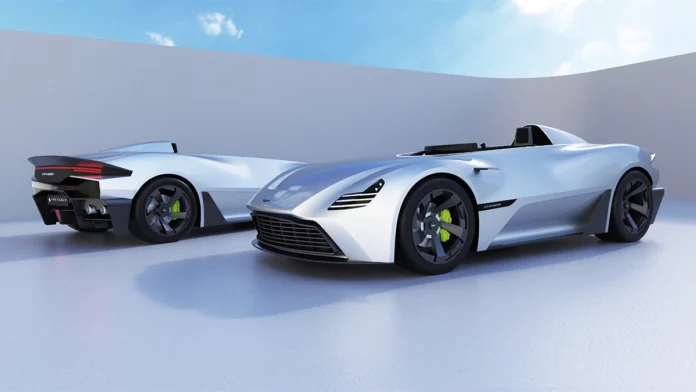The New Normal
The automotive industry faces a transformative period marked by a surge in electric vehicles (EVs) and supply chain disruptions caused by the pandemic. Production delays have surged, with a potential industry-wide loss of $30-50 billion. However, the shift to EVs aligns with environmental goals, reducing emissions and promoting sustainability.
It also fosters technological innovation, emphasizing software integration and digital services. Consumer preferences are changing in favor of EVs and advanced tech features. Governments are incentivizing EV adoption, while collaboration between traditional automakers and tech firms is on the rise. The industry’s strategic adaptation to these challenges will define its future.

Electric Vehicles (EVs)
- Rise in Launch Delays: The PwC Consulting report indicates a significant increase in delays for vehicle launches. In 2023, 34% of launches were delayed due to workforce issues, adherence to quality standards, and supply chain disruptions, a notable increase from the 5% in 2018.
- Financial Impact of Delays: These delays are costly, with automakers potentially losing about $200 million each year. Across the industry, this could mean total losses between $30 billion and $50 billion, highlighting the substantial financial consequences of these delays.
- Launch Success Rates Over Time: Despite the obstacles, 45% of vehicle launches in 2023 were successful, an improvement from 30% in 2022 but still lower than the 87% in 2017 and 77% in 2018.
- Reasons Behind the Delays: The transition to producing EVs, along with the integration of advanced driver assistance systems and sophisticated software, are major factors contributing to these delays. This indicates a significant shift in the industry towards new technologies and business models.
- Future Projections: The report predicts that these launch delays will likely persist, with an increase expected through 2026. This is mainly due to the anticipated introduction of a much larger number of electric vehicles in the coming years.
Automotive Innovation
The key analysis of the automotive industry’s challenges, as outlined in the PwC Consulting report, can be summarized as follows:
- Substantial Increase in Production Delays: There’s been a significant rise in the number of vehicle launch delays since 2020. By 2023, 34% of vehicle launches faced delays due to production issues, a stark increase from earlier years (5% in 2018). This trend signifies a notable shift in the industry’s operational dynamics.
- Financial Ramifications: The report highlights the high cost of these delays, estimating a potential annual loss of $200 million for an individual automaker. This could cumulatively lead to industry-wide losses ranging from $30 billion to $50 billion, underscoring the severe financial impact of these production challenges.
- Comparison of Launch Success Rates Over Years: Despite the increase in delays, 45% of launches in 2023 were successful, showing some resilience compared to 30% in 2022. However, this is a decline when viewed against the more successful launch rates in 2017 (87%) and 2018 (77%).
- Contributing Factors to Delays: The transition to electric vehicles, along with the integration of complex driver assistance systems and software, are primary contributors to these delays. This reflects the industry’s evolving landscape, where traditional manufacturing processes are being challenged by new technologies and market demands.
- Future Outlook and Continuing Trends: The report suggests that these challenges are not transient and expects an ongoing trend of production delays through 2026. This is partly due to the planned surge in electric vehicle production, which is likely to introduce new complexities and operational hurdles.
Sustainable Transportation
The impact of the recent trends in the automotive industry, particularly the shift towards electric vehicles (EVs) and the disruptions caused by the global pandemic, can be analyzed in various dimensions:
Economic Impact
- Financial Strain: Increased production delays lead to significant financial losses for automakers. The PwC report estimates annual losses of about $200 million per automaker, scaling up to $30-50 billion industry-wide.
- Investment in EV Technology: Transitioning to EVs requires substantial investment in new technologies and infrastructure, impacting companies’ financial planning and resource allocation.
- Market Dynamics: The EV market is growing, potentially leading to new revenue streams but also requiring substantial capital investment and R&D expenditure.
Operational Impact
- Supply Chain Disruptions: The pandemic has significantly disrupted global supply chains, affecting the availability of key components and raw materials.
- Production Delays: Increased complexity in manufacturing EVs and integrating advanced technologies leads to more frequent and prolonged production delays.
- Workforce Transformation: The shift to EVs necessitates a workforce skilled in new technologies, necessitating training and potentially leading to skill gaps.
Environmental Impact
- Emission Reduction: The move towards EVs aligns with global efforts to reduce carbon emissions and combat climate change.
- Sustainable Practices: The industry’s shift reflects a broader move towards sustainability, influencing everything from production methods to corporate policies.
Technological Impact
- Innovation Drive: The focus on EVs and advanced driver-assistance systems (ADAS) spurs innovation in various technological domains.
- Software and Digital Integration: There’s a growing emphasis on software capabilities and digital services in vehicles, transforming the nature of automotive products.
Market and Consumer Impact
- Changing Consumer Preferences: As environmental concerns grow, consumer preference is increasingly shifting towards EVs and vehicles with advanced technology features.
- Competitive Landscape: The EV market is attracting new entrants, including tech companies, intensifying competition and reshaping the industry landscape.
Regulatory and Policy Impact
- Government Incentives and Regulations: Many governments are promoting EV adoption through incentives and regulations, influencing market trends.
- Global Standards and Compliance: Automakers must navigate varying global standards for emissions, safety, and technology, complicating product development and market strategies.
Strategic Impact
- Long-term Planning: Automakers need to align their long-term strategies with the evolving landscape, balancing current market demands with future trends.
- Collaborations and Partnerships: There’s an increasing trend towards collaborations between traditional automakers and tech companies to share expertise and resources.
Green Automotive Practices
The automotive industry is undergoing a profound transformation, driven by technological advancements, changing consumer preferences, environmental concerns, and the aftermath of the pandemic. While this shift presents significant challenges, including operational complexities and financial risks, it also offers opportunities for innovation, market expansion, and alignment with sustainable practices. The industry’s response to these challenges and its adaptability will shape its trajectory in the coming years.
Here’s a table presenting the pros and cons of the current automotive industry trends, particularly focusing on the shift towards electric vehicles (EVs) and the challenges faced due to the pandemic:
| Pros | Cons |
|---|---|
| 1. Technological Advancement: The shift towards EVs signifies technological progress and innovation. | 1. Increased Production Delays: Transition to EVs and pandemic impacts have led to more launch delays. |
| 2. Environmental Benefits: EVs offer reduced emissions, contributing to environmental sustainability. | 2. Financial Impact: Delays are costly, potentially leading to significant losses for automakers. |
| 3. Industry Evolution: Adapting to new technologies prepares the industry for future market demands. | 3. Operational Challenges: Integrating new technologies and systems introduces complexity. |
| 4. Market Expansion: Diversification into EVs opens new market opportunities. | 4. Supply Chain Disruptions: Pandemic-related disruptions have strained supply chains. |
| 5. Competitive Edge: Innovating in EVs and advanced systems can give companies a competitive advantage. | 5. Skill Gap: Transitioning to EVs requires new skills and expertise, posing a workforce challenge. |
Environmental Impact of Automobiles
The automotive industry is currently navigating through a transformative phase. The shift towards electric vehicles and advanced technologies, compounded by the aftereffects of the global pandemic, has disrupted traditional manufacturing timelines and processes, leading to increased production delays and significant financial implications. The industry’s ability to adapt to these changes will be crucial in determining its future trajectory.
Conclusion
In essence, the automotive industry is undergoing a significant period of change, characterized by increased production delays, largely driven by the move towards electric vehicles and the impact of the pandemic. The economic implications are considerable, and the industry seems to be in a phase of adjustment and transformation, which could continue to present challenges in the near term.
Embrace innovation, prioritize sustainability, collaborate for success, invest in workforce development, advocate for favorable policies, stay attuned to consumer trends, and plan strategically. These actions are essential for navigating the transformative automotive industry and ensuring a prosperous, sustainable, and competitive future.
PwC Consulting via Automotive News




































